more>>More News
- National Day
- ways to integrate into Chinese style life
- Should they be in the same university with me?!!
- Chinese Ping Pang Legend: the Sun Will Never Set
- A Glance of those Funny University Associations
- mahjong----The game of a brand new sexy
- Magpie Festival
- Park Shares Zongzi for Dragon Boat Festival
- Yue Fei —— Great Hero
- Mei Lanfang——Master of Peking Opera
Bowls and Chopsticks in Chinese culture
By admin on 2014-12-15
Maybe you are unskilled with Bowls and Chopsticks on a Chinese dinner while I am unskilled in using fork and knife. Obviously, table ware performs more duty than assistantance of taking in food. It is a piece of mirror, reflects the local culture and civilization. In certain times, bowls and chopsticks come to be media in transfering oriental and Chinese culture to people live in other place while the delicious Chinese food spreads over the world.
Westerners are very particular about courtesy when dining, eating dishes in a fixed order. Even the manner of placing tableware is restricted.
Chinese are much easier at the table, and all they use are a bowl, chopsticks and a spoon. Just like the western saying where “less is more,” in Chinese traditional table ware is both simple and ingenious.
|
Bowls with emerald green grain, simple but elegant |
To treat the matter of eating as a part of ‘life art’, we can start from table ware.
A bowl, emerging from thousands of years of civilization
China is an ancient agricultural country, so that as early as the Neolithic Age, people had already understood to dine with bowls.
As a daily necessity in contemporary China, the bowl, originated from the clay bowl and pottery bowl in the Neolithic Age, and is more or less the same with the ancient one in shape. After thousands of years, only the material, technique and decorative method has evolved.
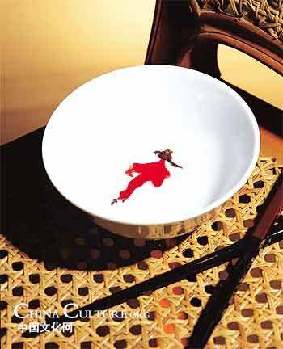 |
An elegant woman painted on the bowl is based on the appearance and trapping of women in the Tang Dynasty. |
The bowl, wide at the top and narrow at the bottom, was hard to stand steadily on the flat, so that archaeologists believed that the ancients initially put bowls in holes dug on the ground. The earliest bowls were earthen, needing only 600 to 700 degree for firing. According to archeological findings and historical records, the first porcelain bowl appeared during the period of the Shang (about 1600 – 1100 BC) and Zhou (1122 BC – 256 BC) to Spring and Autumn (770 – 476 BC) and Warring States (475 – 221 BC) periods, which was an original work of celadon porcelain.
Till the Han Dynasty (206 BC – 220 AD), the using of the bowl took on multiple purposes, divided from usage for holding rice, soup, dish, tea and wine, and its new main function was to serve as a sacrificial appliance. From primitive society to the Qin Dynasty (221 – 207 BC), commonly people used pottery ding (an ancient cooking vessel) or bronze ding for sacrificial ceremony, but from the Han Dynasty, big opening bowls came in to use for containing immolations. Up till now, the biggest blue-and-white porcelain has been found for sacrificial use.
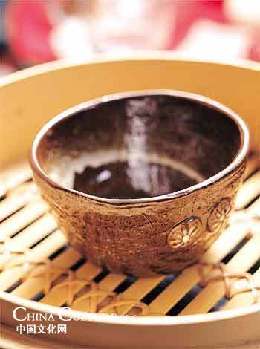 |
A traditional Chinese porcelain bowl of fine feel, simply shaped with the color of figuline |
All the bowls remaining are porcelain in Dehua, which is also known as “the capital of porcelain”. The earliest bowl in the Dehua Ceramics Museum was one from the Tang Dynasty (618 – 907 AD), when white porcelain was most common. Later blue-and-white porcelain bowl emerged, and the technique reached its peak in the Qing Dynasty (1644 – 1911 AD).
In the Ming Dynasty (1368 – 1644 AD), most bowls adopted the decoration with floral pattern, which oriented from Changsha kilin in the Tang Dynasty and began to blossom in the Ming Dynasty. The most common used bowls were catering bowls with white ground and blue designs during this period. Qing porcelain bowls exceeded previous ones from every aspect, skillful craftwork, rich and varied in shape, glaze and designs. It takes one’s breath away to see tri-color porcelain, five-color porcelain and powder doped color decorated porcelain bowls for the exclusive use of the emperor.
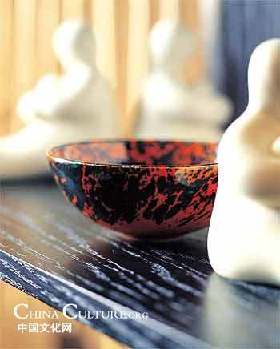 |
A red porcelain bowl seems more remarkable in the plain background. |
Bowls have been made from a variety of materials: porcelain, wood, jade, glass and metal and delicately made antique bowls are a collectors’ favorite. Compared with golden, silver and wooden bowls, porcelain bowls are more common and widely used and for everyday Chinese most cannot dine without it. Thus many Chinese usually say “golden bowl” or “iron bowl” to describe their living condition.
Wine also has been wedded to bowls from ancient times, and now the custom remains in Inner Mongolia, Tibet and other regions.
Chopsticks, a great intellectual achievement
Chopsticks play an important role in Chinese food culture. Chopsticks are a pair of small equal-length tapered sticks, which are generally believed to have originated in ancient China, showing the special long standing civilization of the nation. They are the traditional eating utensils of China, and are also widely used in Japan, Korea, Taiwan, and Vietnam.
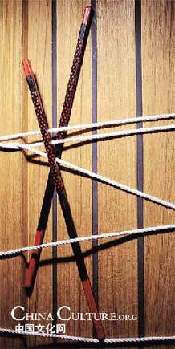 |
Chinese are fond of bamboo chopsticks. This pair of black and red bamboo chopsticks makes your dining handier. |
When the Chinese began to use chopsticks as an eating instrument is anybody’s guess. They were first mentioned in writing in Liji (The Book of rites), a work compiled some 2,000 years ago, but certainly they had their initial form in the twigs which the primitive Chinese must have used to pick up a roast after they began to use fire. It is likely that people cooked their food in large pots which retained heat well, and hasty eaters then broke twigs off trees to retrieve the food. The earliest evidence of a pair of chopsticks made out of bronze was excavated from Yin Ruin’s Tomb 1005 at Houjiazhuang, Anyang, Henan province, dated roughly 1200 BC.
The pieces of food were small enough that they negated the need for knives at the dinner table, and chopsticks became staple utensils. It is also thought that Confucius, a vegetarian, advised people not to use knives at the table because knives would remind them of the slaughterhouse.
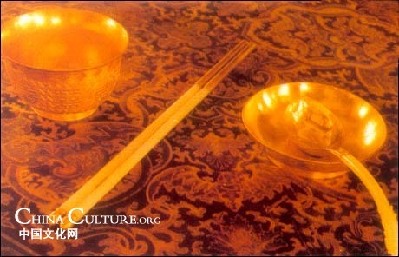 |
Qing gold inlayed jade chopsticks. |
Simply a pair of chopsticks can fulfill all the functions at table, and compared with western table wares of “waving knife”, they have a sense of “harmony.” And chopsticks are seen as lucky items in ceremonies by many nationalities.
Chinese chopsticks are usually 9 to 10 inches long and rectangular with a blunt end. Bamboo has been the most popular material because it is inexpensive, readily available, easy to split, resistant to heat, and has no perceptible odor or taste.
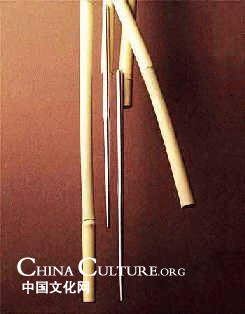 |
The Chinese word for chopsticks is “kuaizi”. “Kuai” is a semantic-phonetic compound with a phonetic part of the word “quick”. In Chinese, the old word for “chopsticks” was “zhu”. However, “zhu” became a taboo on ships because it sounded the same as another word meaning “to stop”. Consequently, it was replaced by a word of opposite meaning, “kuai” (fast, quick). This gradually spread until it became the word for “chopsticks” in most varieties of modern Chinese.
For westerners who are used to the knife and fork, to learn how to use chopsticks isn’t an easy task, but once you master them, they are simple and convenient. No wonder many western scholars praise chopsticks as a great crystallization of Chinese wisdom.
- Contact Us
-
Tel:
0086-571-88165708
0086-571-88165512E-mail:
admission@cuecc.com
- About Us
- Who We Are What we do Why CUECC How to Apply
- Address
- Study in China TESOL in China
Hangzhou Jiaoyu Science and Technology Co.LTD.
Copyright 2003-2024, All rights reserved




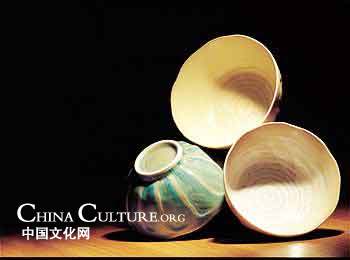
 Chinese
Chinese
 English
English
 Korean
Korean
 Japanese
Japanese
 French
French
 Russian
Russian
 Vietnamese
Vietnamese
